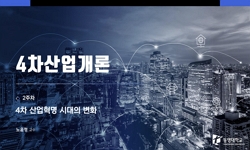A driving Simulator is very useful instrument not only to test the device of future cars but also to evaluate the HMI(Human-Machine Interface). It has already been developed since 1970's. Most driving simulators has the motion platforms which are inst...
http://chineseinput.net/에서 pinyin(병음)방식으로 중국어를 변환할 수 있습니다.
변환된 중국어를 복사하여 사용하시면 됩니다.
- 中文 을 입력하시려면 zhongwen을 입력하시고 space를누르시면됩니다.
- 北京 을 입력하시려면 beijing을 입력하시고 space를 누르시면 됩니다.
https://www.riss.kr/link?id=A76296570
- 저자
- 발행기관
- 학술지명
- 권호사항
-
발행연도
2006
-
작성언어
Korean
- 주제어
-
자료형태
학술저널
- 발행기관 URL
-
수록면
125-132(8쪽)
- 제공처
-
0
상세조회 -
0
다운로드
부가정보
다국어 초록 (Multilingual Abstract)
A driving Simulator is very useful instrument not only to test the device of future cars but also to evaluate the HMI(Human-Machine Interface). It has already been developed since 1970's. Most driving simulators has the motion platforms which are installed below the cabin for realistic driving feel. However this causes undesirable reverse force during sudden maneuvers. During a sudden left hand turn, the driver is expected to experience a pulling force toward the right due to centrifugal forces. However at the start of the tilting motion, the driver experiences a force in the opposite direction for a short period of time due to inertial accelerations. This is responsible for the simulator sickness which is the major shortcoming of driving simulators. This paper describes and introduces a new type motion platform, the inverted driving simulator. With the inverted motion platform, the initial force at the start of the tilt and the resulting force due to gravitational pull after the motion platform is tilted are in the same direction. Therefore, with proper motion modulation, the driver can be made to feel the desired force in the correct direction right away form the beginning of motion.
목차 (Table of Contents)
- Abstract
- 1. 서론
- 2. 시뮬레이터 소프트웨어 부분
- 3. 시뮬레이터 하드웨어 부분
- 4. 결론 및 향후 연구
- Abstract
- 1. 서론
- 2. 시뮬레이터 소프트웨어 부분
- 3. 시뮬레이터 하드웨어 부분
- 4. 결론 및 향후 연구
- 후기
- References
동일학술지(권/호) 다른 논문
-
GPS를 이용한 코너 진입 시 차량 전복 예방 시스템 개발
- 한국자동차공학회
- 황재영(Jeayoung Hwang)
- 2006
-
A Novel Free-flow ETC System for multi-line using RF-DSRC and RFID Communications
- 한국자동차공학회
- Jongin Jung
- 2006
-
- 한국자동차공학회
- 김병국(Byungkook Kim)
- 2006
-
- 한국자동차공학회
- 김광호(Kwangho Kim)
- 2006




 DBpia
DBpia





